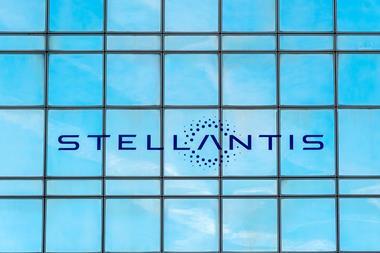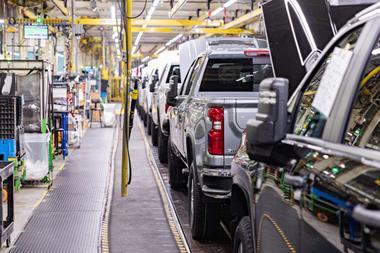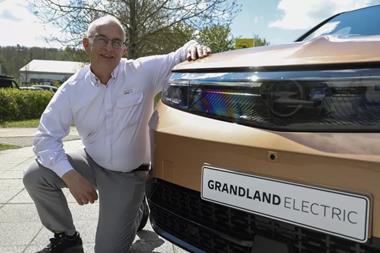
A pre-treatment technology from Chemetall is helping the luxury carmaker reduce environmental impact levels at its Grugliasco plant
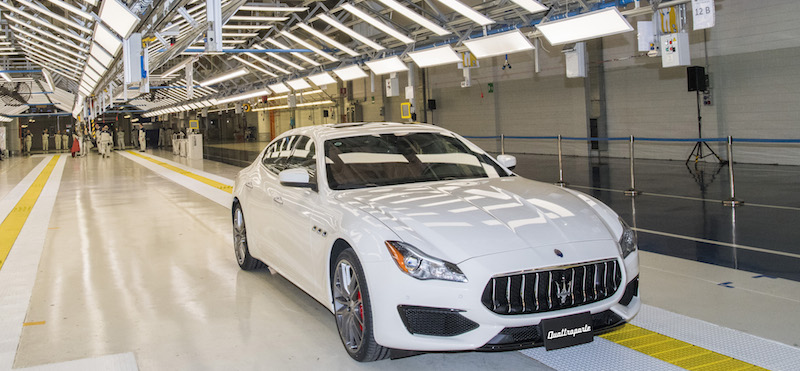 As a brand, Maserati stands for a tradition of high-performance cars – style, performance, luxury and safety. It is a marque that underlines the FCA strategy for responsible production practices. To further support the company in optimising resources, a modern zinc-phosphating technology has been introduced to the car body pre-treatment process – Chemetall’s GardoFlex.
As a brand, Maserati stands for a tradition of high-performance cars – style, performance, luxury and safety. It is a marque that underlines the FCA strategy for responsible production practices. To further support the company in optimising resources, a modern zinc-phosphating technology has been introduced to the car body pre-treatment process – Chemetall’s GardoFlex.
The procedure offers significantly lower water and energy consumption as well as reduced CO2 emissions during the pre-treatment process. These were key benefits for the Maserati management team when changing the pre-treatment of their flagship models, Quattroporte and Ghibli, from a traditional tricationic phosphate to GardoFlex. Chemetall’s new process provides the proven benefits of the zinc-phosphating technology, offering better corrosion protection and adhesion for the subsequent e-coat and paint layers. GardoFlex, additionally, is much more environmentally-sound, facilitates multi-metal pre-treatment and ensures a high process stability.
Temperature down, performance up“With the GardoFlex technology, we were able to reduce the temperature of our zinc-phosphating stage to about 37°C from 50°C. This provides a substantial impact on the environmental aspect of our vehicle production,” says Fabio Negri, paintshop unit manager at AGAP Maserati plant, Grugliasco, Turin.
The GardoFlex process was approved at 37°C +/- 2°C by the Centro Ricerche FIAT (CFR) in Turin back in 2015. GardoFlex technology can be used in existing plants and usually does not require any technical alterations of the installations. In the case of Maserati, it was possible to shorten the pre-treatment process sequence since the passivation stage after zinc-phosphating could be eliminated. Additional benefits included an increase in production yield and reduced chemical consumption.

Process efficienciesChemetall’s zinc-phosphating technology consists of high-performance modules – ranging from cleaning/degreasing to activation, phosphating and the last rinsing step. For every process step within the metal pre-treatment, Maserati and Chemetall experts defined the optimal modules. With a distinctly longer bath life, lower water consumption and smaller effluent volumes, this tailor-made solution contributes to the resource-saving value of this technology.
The GardoFlex process allows for a robust phosphating performance. The finer crystal formation and the uniform layer on the metal surface ensure excellent quality in the phosphate layer. “The low-temperature GardoFlex technology combines top anti-corrosion performance and high process stability at a low carbon footprint,” says Carlo Magrinelli, Chemetall’s global key account manager for FCA Group. “We are happy to support our valuable customer FCA in introducing eco-efficient processes,” he adds.
Multi-metal capabilityAll of the common metal materials used widely across the automotive industry – galvannealed steel, hot-dip galvanised steel, cold-rolled steel and aluminium – can be pre-treated with GardoFlex in the same production line. No limits exist for the throughput of aluminium substrates and even non-galvanised steel can be treated without compromise. Instead of a powder product, Maserati has chosen the liquid product for its production line. The automatic dosing of the liquid version ensures a simplified process operation. Maserati’s goal is to build exclusive, luxury cars with outstanding engineering while reducing the environmental impact of their manufacturing processes. With the implementation of GardoFlex, the company has made great strides toward this target.
Greater independenceThe state-of-the-art GardoFlex technology suited for multi-metal application can be directly integrated into any production line. As a consequence, no cost-intensive alterations are required and the benefits of the new technology can be optimally adapted to each individual production line. Renowned car manufacturers worldwide already rely on this new zinc-phosphating technology because GardoFlex offers them unprecedented flexibility with regard to their production process and also to their substrate throughput – at a high quality and optimised process costs.
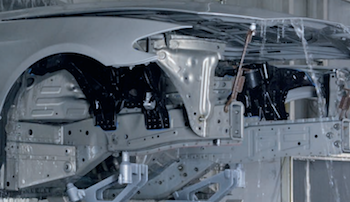 A strength of GardoFlex is the deposition of an uniform coating on the substrate, regardless of the OEM’s chosen aluminium content
A strength of GardoFlex is the deposition of an uniform coating on the substrate, regardless of the OEM’s chosen aluminium contentNo issues with cavitiesCar body cavities, especially on aluminium surfaces, are always a challenge for the pre-treatment process, as inside these cavities, there is no bath circulation. Chemetall performed a line trial with a cavity box filled with aluminium test panels. This box was placed inside a car body trunk and run through a zinc-phosphating line. A traditional zinc-phosphating process showed no phosphate coatings on the surface of the test panel. After switching to Chemetall’s high-performance activating and passivating agent Gardolene and a GardoFlex pre-treatment process, the test panels showed a high-quality homogeneous phosphate coating.
GardoFlex for aluminiumFor some years already, use of aluminium has been gaining ground in automotive manufacturing. Up to 70% of it is pre-treated in the production plants of the automotive manufacturers – a fact that may lead to technically the most demanding application when using conventional zinc-phosphating processes. GardoFlex, by contrast, can be used for all standard metal materials used in the automotive industry.
On aluminium substrates, GardoFlex ensures a reduced pickling loss on the metal surface. This has a dual positive effect for the user: it reduces the consumption of fluoride-containing additives and significantly curbs the phosphate sludge volumes. The latter of these aspects especially helps to economise on maintenance and disposal costs.
GardoFlex deposits a uniform, thin phosphate coating on the aluminium substrate. With only a zirconium passivation, surface irregularities resulting from car body construction or pressing, for example, scrub marks, scratches or impressions from the vacuum cups of the robots, could lead to visible problems for the subsequent application of the cataphoretic paint (e-coat) which could only be remedied by way of extensive manual work.
GardoFlex generates a phosphate coating that smoothes minor irregularities from upstream processes and thereby supports a homogeneous deposition of the e-coat.
































